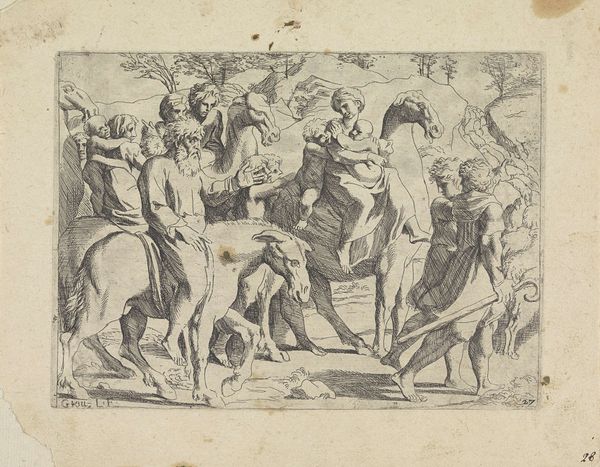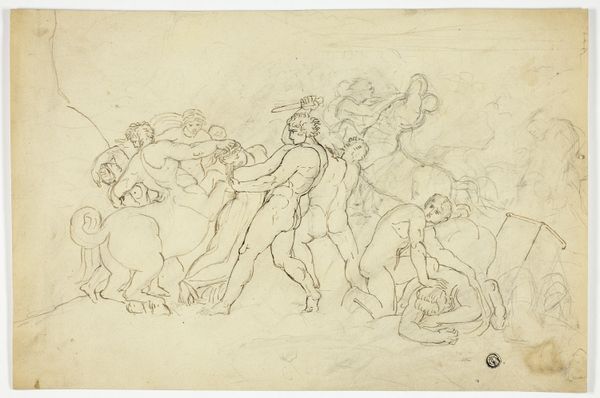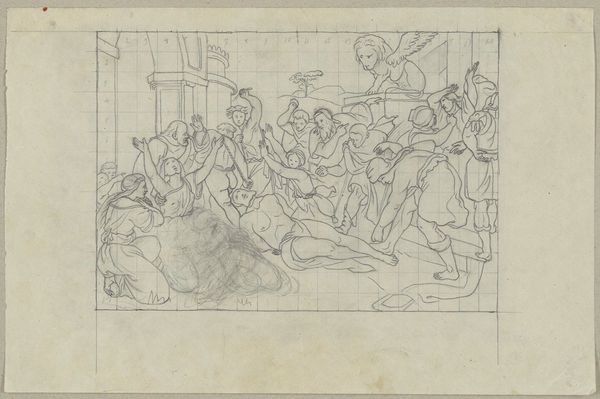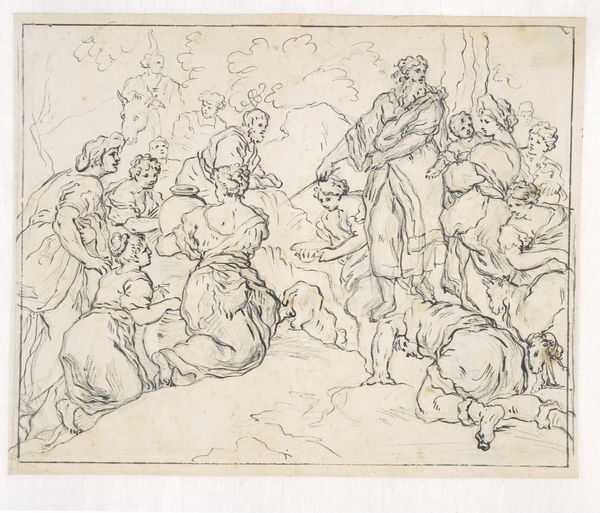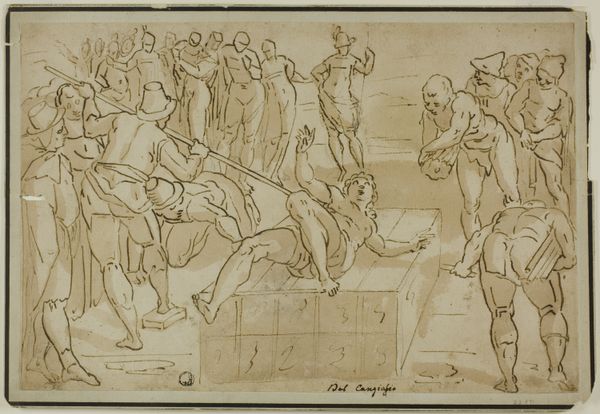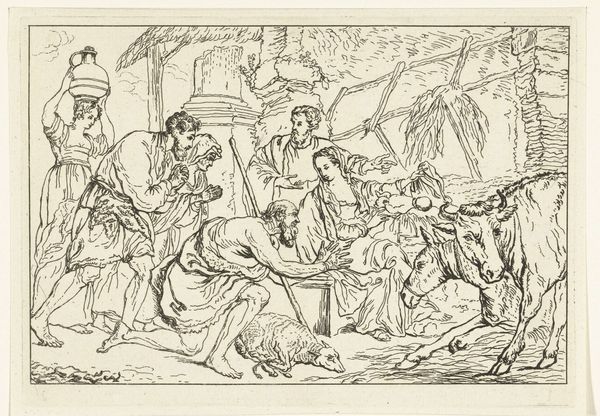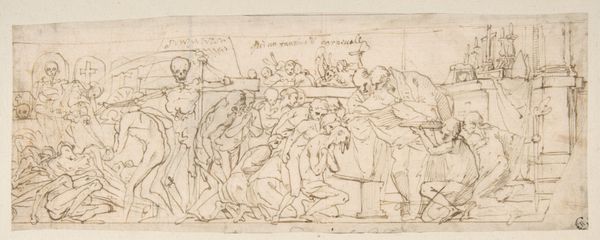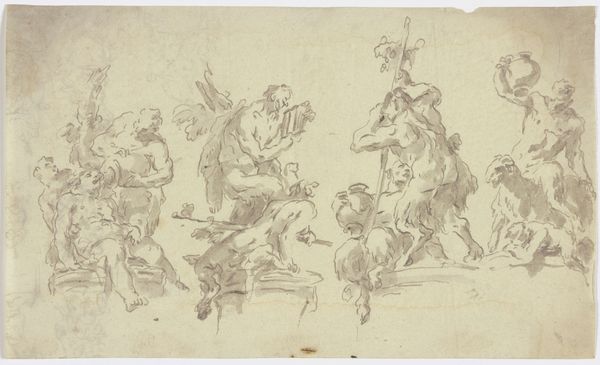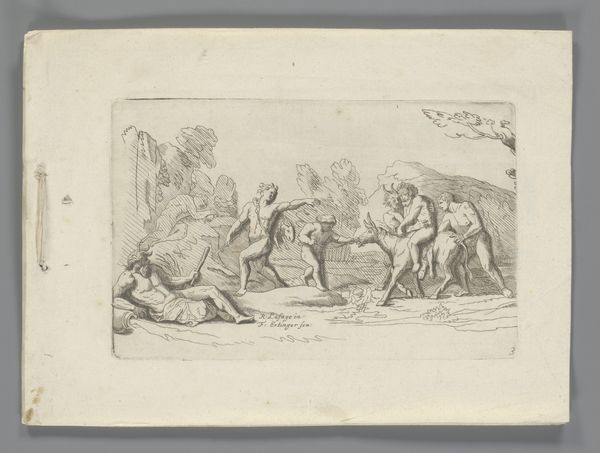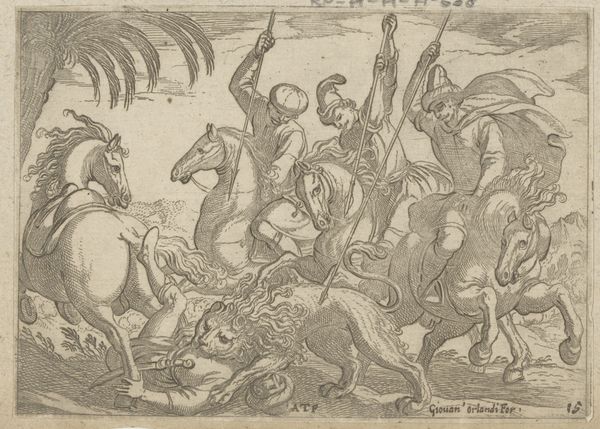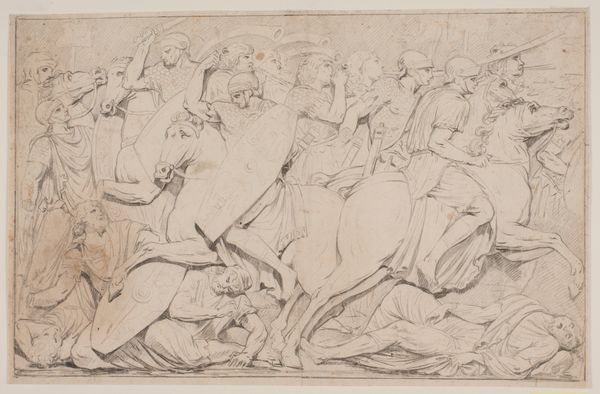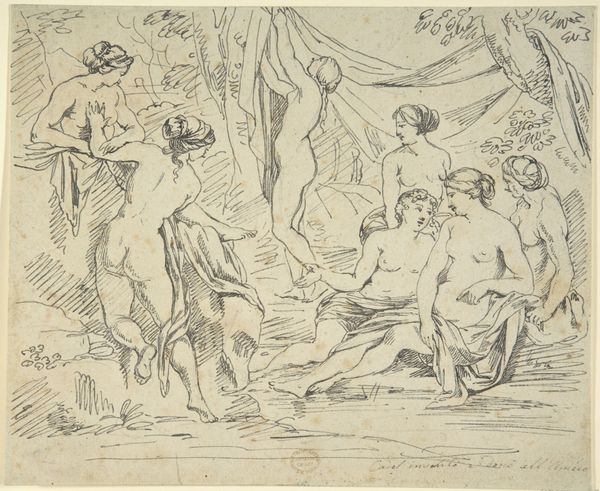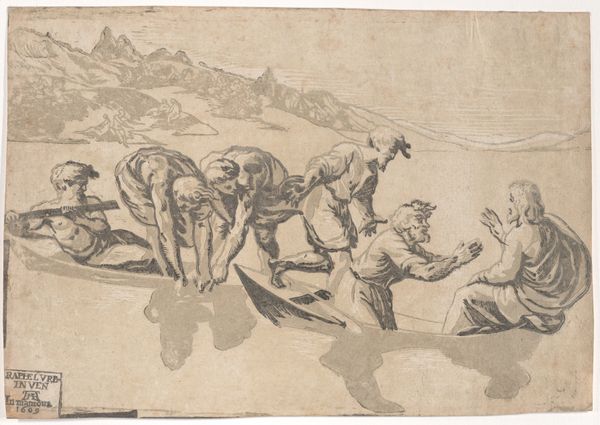
drawing, paper, ink, pen
#
drawing
#
ink drawing
#
classical-realism
#
figuration
#
paper
#
ink
#
pen
#
genre-painting
Dimensions: 296 × 443 mm
Copyright: Public Domain
Curator: This is Joshua Cristall's drawing titled "Bacchanale," housed here at The Art Institute of Chicago. It is rendered in pen and ink on paper. Editor: It feels both energetic and delicate. The fluidity of the ink mimics the movement of the figures, almost as if they’re caught mid-revelry. Curator: Yes, that dynamic is intentional. Bacchanales were Roman festivals honoring Bacchus, the god of wine, freedom, and ecstasy. This piece tries to capture the liberated atmosphere and frenzied ritual inherent in these gatherings. You can almost hear the music and ecstatic shouts! Editor: And the bodies… They seem deliberately unfinished. There’s an emphasis on outline and suggestion rather than detailed form. This gives it an airiness, a dreamlike quality that’s appropriate for such a Dionysian scene. Is Cristall deliberately alluding to ancient Roman styles, too? Curator: Absolutely. Cristall employs a classical-realist style, reviving ancient artistic traditions to investigate cultural memory. The arrangement of the figures evokes classical friezes, doesn't it? And look closely: they engage in ecstatic dancing, drinking from flagons and overturning ritual objects, reflecting the ancient accounts of ritual madness. It mirrors how, culturally, we’ve returned to these tropes again and again. Editor: Interesting that even in its sketch-like form, there is such careful balance between frenzied energy and composed structure. What are some of the more recognizable symbols embedded in this depiction? Curator: Beyond the wine jug and musical instruments, one may see symbols relating to altered states of mind. They may also represent fertility, associated with Bacchus through the rebirth of spring following winter's stagnation. These Bacchanales, after all, promised personal transcendence and communion with nature. The ink, even on paper, provides a lasting memory for these motifs. Editor: For me, it’s less about accurate representation and more about Cristall capturing a sense of unbound joy, filtered through his own understanding of classicism. The work achieves something interesting by being unfinished: suggesting much, telling little. Curator: Exactly. Cristall uses these ancient forms to present a feeling. Editor: A sentiment, well visualized by these forms that have stayed in the collective subconscious for centuries.
Comments
No comments
Be the first to comment and join the conversation on the ultimate creative platform.
